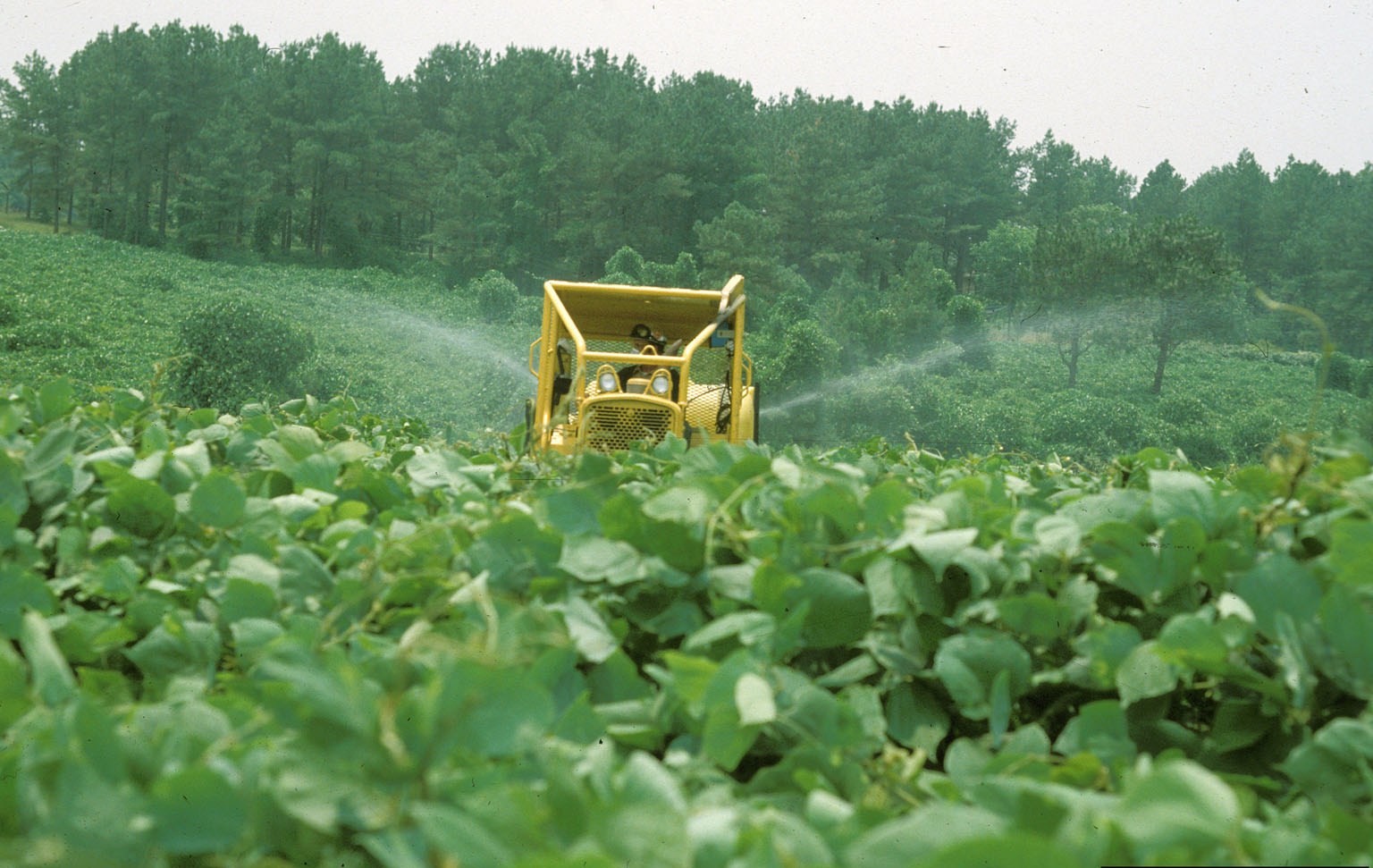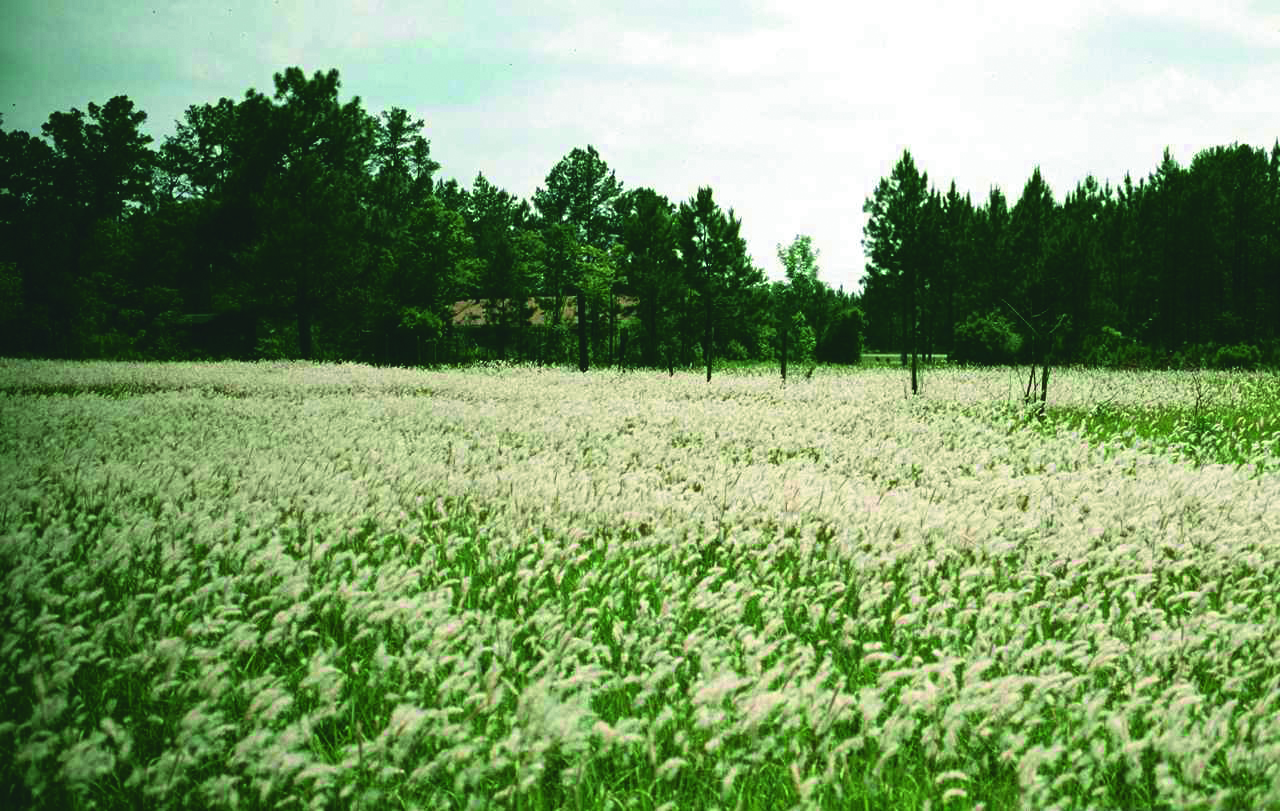Identification and control options for troublesome weeds.
No one wants their hunting season ruined by an overgrowth of weeds. There are many different ways to control invasive weeds in wildlife. Determining the type of weed will determine the different ways to control invasive weeds. The following weed types are some of the most common weeds threating to take over crops and someone hunting season.
Kudzu (Pueraria montana)
You would be hard pressed to live in south Alabama and not know of or had to deal with kudzu. Kudzu was brought to the U.S. in 1876 at the Philadelphia Centennial Exposition as an ornamental and house plant.
“Total eradication of kudzu could be a two- to 10-year undertaking and usually involves repeat herbicide applications.”
Before everyone knew of its invasive nature, kudzu was planted all over the eastern U.S. as a form of erosion control. From the 1930s into the 1950s, the Soil Conservation Service actually paid and encouraged farmers to plant kudzu to help with erosion due to deep tilling farming practice.
It was later discovered that the hot and humid climate of the Southeast was near perfect growing conditions for the vine. And with no natural predators, it became known as “the vine that ate the South.”
If you are one of the unlucky people who have this invasive plant trying to take over your property, there are different ways to control invasive weeds, like kudzu. Being a legume, kudzu is a great forage for livestock. Everything from pigs to cattle to deer seems to enjoy the leafy forage.
Continued grazing or cultivation for multiple years has shown to be an effective way to control the spread of kudzu. By depleting its root reserves, you can take back areas the vine has claimed.
When using mechanical means to kill kudzu, it’s not necessary to remove all vines, only the crowns that grow on or below the soil surface underneath the leaves. The crowns can be anywhere from marble to basketball size and must be totally removed to prevent vines from coming back.
Total eradication of kudzu could be a two- to 10-year undertaking and usually involves repeat herbicide applications. For a detailed list of effective herbicides and application rates, visit the Alabama Cooperative Extension System site.

Cogongrass (Imperata cylindrica)
Cogongrass has been identified as one of the most aggressive and invasive species of plants currently threatening most states in the Southeast and Texas. It usually grows in dense, circular patches found in pine plantations, woodlands, pastures, ditches, and roadsides.
Current estimates show it has over 65,000 acres actively growing and spreading. The very small and light seeds that grow on the silver- or white-colored flower are easily transported by wind as well as accidentally on logging equipment, farm machinery, ATVs, etc.
The best ways to control invasive weeds, like cogongrass, is through herbicides. Herbicides have proven to be the most effective form of eradication. Late April and late September applications have shown to be the most beneficial for control.
The two herbicides currently being used are 41% glyphosate and 52% imazapyr. A good tank mix is two quarts of glyphosate and 12 to 15 ounces of imazapyr per 25 gallons of water. Adding a non-ionic surfactant at one pint per 25 gallons, or AMS (ammonium sulfate) at five pounds granular per 25 gallons can increase herbicide efficiency.
Two applications per year for two to three years may be necessary for complete control of older, well-established Cogongrass infestations. For in-depth information on identification and control of Cogongrass, visit www.cogongrass.org.

Mare’s Tail (Conyza canadensis)
Mare’s tail, also known as horseweed or Canadian fleabane, is a fast-growing summer annual broadleaf weed common to almost every farmer and food plotter.
“Mare’s tail that gets past six to eight inches can be very tough to kill, especially in areas of resistance.”
Although it is most common during the warm months, mare’s tail can germinate February through November. This problematic weed is relatively easy to identify and can be found in every state as well as Canada.
Mature plants can be five to 10 feet tall with single or multiple main stems. Left unchecked, this weed can become a major competition to food plots, row crops, and orchards.
Mare’s tail is found on a wide variety of soil and habitat types and flowers throughout the warm growing months. There has been growing concern over the last decade of areas with mare’s tail resistant to common herbicides such as glyphosate and ALS chemistry.
As with any broadleaf weed, the young plants are much more susceptible to be controlled with herbicides. Mare’s tail that gets past six to eight inches can be very tough to kill, especially in areas of resistance.
Since this weed can germinate in the early spring through the fall, it is important to spray it when the rosettes first start to emerge for the best control. Mare’s tail seeds are relatively short-lived in the seed bank compared to other plants. This means you can have effective long-term control by keeping this weed controlled for several years and not letting any plants mature and produce seeds.
The seeds produced are windblown, so make sure you encourage your neighbor to practice good weed management as well. Dicamba tank mixed with glyphosate has proven to be effective in areas of herbicide resistance.




